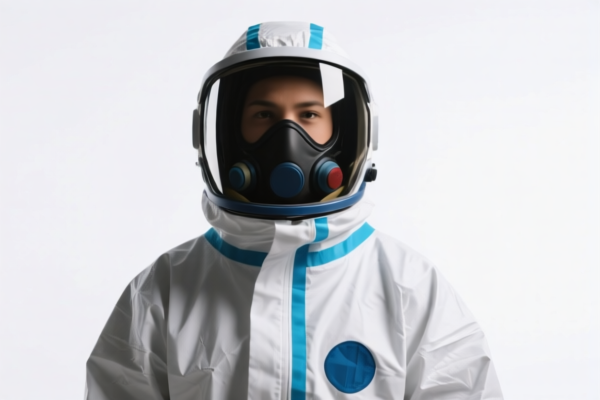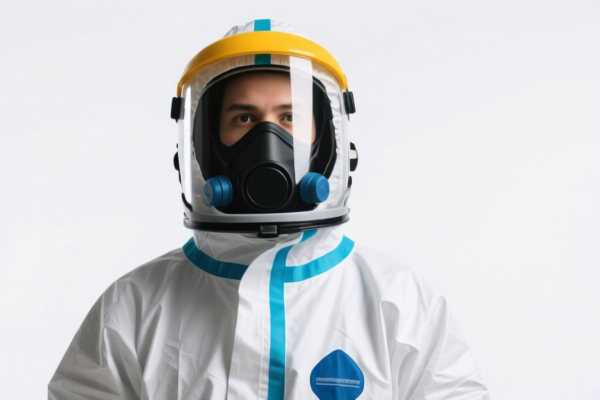| HS Code | Official Doc | Tariff Rate | Origin | Destination | Effective Date |
|---|---|---|---|---|---|
| 6114909040 | Doc | 35.6% | CN | US | 2025-05-12 |
| 6114909045 | Doc | 35.6% | CN | US | 2025-05-12 |
| 6113001005 | Doc | 41.3% | CN | US | 2025-05-12 |
| 6113001010 | Doc | 41.3% | CN | US | 2025-05-12 |
| 6211421088 | Doc | 45.6% | CN | US | 2025-05-12 |
| 6211431088 | Doc | 53.5% | CN | US | 2025-05-12 |
| 6205202063 | Doc | 57.2% | CN | US | 2025-05-12 |
| 6205302071 | Doc | 29.1¢/kg + 25.9%+37.5% | CN | US | 2025-05-12 |
| 3926206000 | Doc | 55.0% | CN | US | 2025-05-12 |
| 3923900080 | Doc | 58.0% | CN | US | 2025-05-12 |




Protective Suit
A protective suit is a garment worn to shield the wearer from various hazards, including chemical or biological agents, heat, radiation, or physical trauma. These suits are designed to create a barrier between the wearer and the surrounding environment, mitigating risks in potentially dangerous situations.
Materials
The materials used in protective suits vary significantly depending on the intended application. Common materials include:
- Tyvek: A flash-spun high-density polyethylene fiber, offering lightweight protection against dry particulate hazards, liquids, and some chemicals.
- Polypropylene: Provides a barrier against splashes, sprays, and dry particles; often used in disposable suits.
- Butyl Rubber: Highly impermeable to gases and vapors, commonly used for protection against chemical warfare agents and certain industrial chemicals.
- Neoprene: Offers resistance to a wide range of chemicals, oils, and solvents, providing flexibility and durability.
- Viton: Excellent resistance to highly corrosive chemicals, fuels, and oils; often used in specialized applications.
- Saranex-laminated fabrics: Provides broad chemical resistance and is often used in more robust, reusable suits.
- Liquid-tight materials (e.g., polyurethane, PVC): Used for suits requiring complete fluid containment.
- Flame-resistant materials (e.g., Nomex, Kevlar): Used in suits designed to protect against fire and heat.
Purpose & Function
The primary function of a protective suit is to prevent contact with hazardous substances. This can include:
- Chemical Protection: Shielding against corrosive chemicals, toxic vapors, and liquid splashes.
- Biological Protection: Preventing exposure to viruses, bacteria, and other infectious agents.
- Radiological Protection: Reducing exposure to radioactive particles and contamination.
- Thermal Protection: Protecting against extreme heat or cold.
- Physical Protection: Providing a barrier against abrasions, punctures, and impacts.
Suits achieve this through features like sealed seams, hoods, gloves, and boots, creating a complete encapsulating barrier. Some suits incorporate air-purifying respirators (APRs) or self-contained breathing apparatus (SCBA) for respiratory protection.
Usage Scenarios
Protective suits are employed in a wide range of industries and situations:
- Hazardous Materials (Hazmat) Response: Emergency responders use suits to handle chemical spills, leaks, and accidents.
- Industrial Safety: Workers in chemical plants, laboratories, and manufacturing facilities wear suits to protect against workplace hazards.
- Healthcare: Medical professionals use suits to prevent exposure to infectious diseases, particularly in isolation wards or during outbreaks.
- Military & Defense: Soldiers and personnel use suits for protection against chemical warfare agents, biological threats, and nuclear contamination.
- Pharmaceutical Manufacturing: Protecting workers from exposure to potent compounds.
- Forensic Science: Protecting investigators at crime scenes with potential biohazards.
- Painting and Asbestos Removal: Protecting against particulate and chemical exposure.
Common Types
- Level A Suits: Provide the highest level of protection, encapsulating the entire body and requiring a self-contained breathing apparatus (SCBA). Used for maximum protection in highly hazardous environments.
- Level B Suits: Provide a high level of protection, typically using a full body suit with a supplied-air respirator. Used when the hazard is known and the concentration is relatively high.
- Level C Suits: Provide protection against known hazards with lower concentrations, utilizing a full or half-face respirator with air-purifying cartridges.
- Level D Suits: Provide basic protection against particulate hazards, typically using coveralls and a respirator.
- Disposable Suits: Lightweight and cost-effective, used for limited-duration tasks with lower hazard levels.
- Reusable Suits: More durable and offer better chemical resistance, requiring decontamination after each use.
- Gas-Tight Suits: Designed to prevent the permeation of gases and vapors, offering the highest level of respiratory protection.
- Liquid-tight suits: Designed to prevent the permeation of liquids.
- Fire Suits: Constructed from flame-resistant materials to protect against heat and fire.
The declared goods are identified as a “protective suit”. Based on the provided reference material, the following HS codes may be relevant:
- 6114909040: This HS code falls under Chapter 61: Articles of apparel and clothing accessories, knitted or crocheted. Specifically, it covers Heading 6114: Other garments, knitted or crocheted, and Subheading 6114909040: Of other textile materials; Other Coveralls, jumpsuits and similar apparel. The total tax rate is 35.6%, comprised of a 5.6% base tariff, 0.0% additional tariff, and a 30.0% additional tariff effective after April 2, 2025.
- 6211421088: This HS code falls under Chapter 62: Articles of apparel and clothing accessories, not knitted or crocheted. Specifically, it covers Heading 6211: Track suits, ski-suits and swimwear; other garments, and Subheading 6211421088: Other garments, women's or girls'; Of cotton; Other Apparel designed for use in hospitals, clinics, laboratories or contaminated areas; Other (359). The total tax rate is 45.6%, comprised of an 8.1% base tariff, 7.5% additional tariff, and a 30.0% additional tariff effective after April 2, 2025.
- 6211431088: This HS code falls under Chapter 62: Articles of apparel and clothing accessories, not knitted or crocheted. Specifically, it covers Heading 6211: Track suits, ski-suits and swimwear; other garments, and Subheading 6211431088: Other garments, women's or girls'; Of man-made fibers; Other Apparel designed for use in hospitals, clinics, laboratories or contaminated areas; Other (659). The total tax rate is 53.5%, comprised of a 16.0% base tariff, 7.5% additional tariff, and a 30.0% additional tariff effective after April 2, 2025.
- 3926206000: This HS code falls under Chapter 39: Plastics and articles thereof. Specifically, it covers Heading 3926: Articles of plastics and articles of other materials of headings 3901 to 3914, and Subheading 3926206000: Articles of apparel and clothing accessories (including gloves, mittens and mitts); Other: Plastic rainwear, including jackets, coats, ponchos, parkas and slickers, featuring an outer shell of polyvinyl chloride plastic with or without attached hoods, valued not over $10 per unit. The total tax rate is 55.0%, comprised of a 0.0% base tariff, 25.0% additional tariff, and a 30.0% additional tariff effective after April 2, 2025.
Regarding HS code 6211421088 and 6211431088, please note that these codes specifically apply to apparel designed for use in hospitals, clinics, laboratories, or contaminated areas.
Customer Reviews
No reviews yet.